Best Of
Omayra Sánchez: The tragic truth behind the famous photo
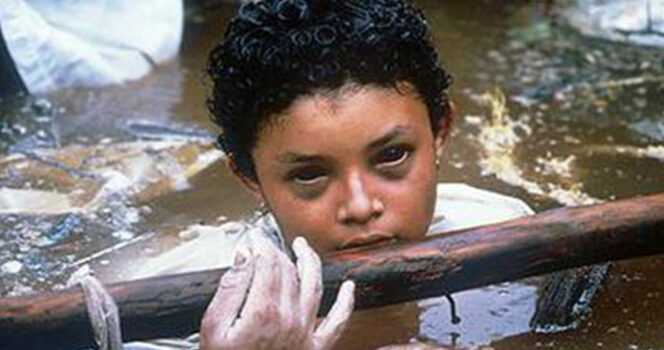

In November 1985, the world witnessed a tragedy that left an indelible scar on humanity. When the Nevado del Ruiz volcano erupted, it unleashed a devastating mudflow that buried the town of Armero in Colombia, wiping out nearly everything in its path.
Over 25,000 lives were lost in one of the most catastrophic natural disasters of all time. Amid the destruction, a single haunting image came to symbolize the unimaginable suffering: a young girl, Omayra Sánchez, trapped in the volcanic mudflow, her fragile face etched with courage and despair.
Captured by photojournalist Frank Fournier just hours before her death, the photograph shook the world. It won the prestigious World Press Photo of the Year in 1986 and remains one of the most powerful images of human vulnerability. But behind the lens, a question still echoes: Why didn’t the photographer save her?
Caution: This article contains material that may be disturbing to some readers.
Inside the Armero tragedy
To truly understand the heartbreaking photograph of Omayra Sánchez, we must first revisit the devastating event known as the Armero tragedy.
On November 13, 1985, the Nevado del Ruiz stratovolcano erupted after 69 years of dormancy, catching nearby towns completely off guard.
Nevado del Ruiz had erupted twice before — once in 1595 and again in 1845. On both occasions, avalanches roared down the Lagunilla River, the very area where the town of Armero would later be built.

Months before the 1985 eruption, experts had detected increased volcanic activity and warned Colombian authorities of the looming danger. Researchers, climbers, and political figures sounded the alarm about an impending disaster, but their warnings were largely ignored, despite clear signs of what was to come.
Farmers reported finding dead fish in nearby basins. Additionally, large amounts of sulfur were detected, and small explosions in the area even triggered a forest fire.
Yet, despite these warnings, no evacuation took place.
94% of the population was wiped out
As the volcano’s crater unleashed devastating pyroclastic flows, it rapidly melted the glaciers atop Nevado del Ruiz, sending four massive lahars — fast-moving mudflows, landslides, and debris — hurtling down its slopes at terrifying speeds of 50 km/h (30 mph). The lahars gained momentum as they rushed through gullies, ultimately engulfing the town of Armero in their deadly path.
According to Colombian sources, the eruption claimed the lives of around 23,000 people — nearly 94% of Armero’s population. The eruption’s smoke and ash soared up to 15 kilometers high, dramatically altering the region’s climate and leaving it in a state of devastation. Entire neighborhoods were wiped out, with 5,092 homes destroyed, 4,718 of them in Armero alone.
The disaster left 230,000 people impacted, with material losses estimated between 35 and 50 billion Colombian pesos, which translates to approximately $7.5 million to $10.5 million USD.
Story of Omayra Sánchez Garzón
Among the many victims was 13-year-old Omayra Sánchez Garzón, whose tragic situation drew the world’s focus.
Omayra Sánchez was born on August 28, 1972, in the town of Armero, where she grew up with her parents, Álvaro Enrique, who worked as a rice and sorghum collector, and María Aleida, a nurse. She shared her home with her brother, Álvaro Enrique, and her aunt, María Adela Garzón.

On the night of the Armero catastrophe , Omayra and her family were awake, concerned about the ash from the erupting Nevado del Ruiz volcano.
As they anxiously watched, they suddenly heard the deafening sound of an approaching lahar. When the massive eruption buried the Andean valley of Armero under a sea of mud, Omayra became trapped beneath the wreckage of her home, with concrete and debris pinning her down, making escape impossible.
A brave soul in the face of despair
As rescue workers arrived, they found her legs trapped under the rubble, her aunt’s lifeless arms still tightly clutching her. Despite efforts to pull her free, the task seemed impossible — any attempt to move her risked causing further harm. Her legs were trapped so tightly that rescuers placed a tire around her to keep her afloat as rising water surrounded her. Though the rescuers tried everything they could, it soon became clear that the situation was dire.
Doctors determined that the only way to free Omayra was by amputating both of her legs at the knees. However, there was no equipment available to perform the necessary surgery.
For over 60 hours, Omayra remained trapped, submerged in water, her body slowly succumbing to the elements. Yet, she never lost her calm demeanor. She spoke to a volunteer journalist, asking for sweet foods, singing, and even agreeing to an interview. But as the hours wore on, fear crept in.
She began hallucinating, talking about school and a math exam she thought she had missed. Her hands swelled and her face reddened as the water continued to rise. Still, she clung to life.
She was a courageous girl.
”I don’t feel my body anymore,” she said.
The famous photograph
Omayra’s story could have been different. Had the authorities acted upon the early warnings that had been issued, perhaps Omayra’s fate would have been another tragedy avoided. Yet, as the hours passed, it became impossible to save her.
Lacking the surgical equipment needed to amputate her legs and relieve the pressure, the doctors on site had to make a heart-wrenching decision: to let her die peacefully rather than subject her to further suffering.
It was in this final moment, when Omayra’s life was slipping away, that a French journalist named Frank Fournier arrived. He had flown into Bogotá just days after the eruption, and as he made his way to Armero, he was struck by the haunting silence and devastation.

“All around, hundreds of people were trapped. Rescuers were having difficulty reaching them. I could hear people screaming for help and then silence – an eerie silence,” he told the BBC two decades after the horrifying disaster. “It was very haunting.”
A farmer led him to Omayra, whose body was already beginning to show signs of swelling. Fournier, moved by her quiet courage and the agony she endured, snapped a photograph — a moment frozen in time that would come to symbolize the helplessness of the situation and the failure of those in power.
Fournier later reflected on the profound impact of the image, stating, “She was facing death with courage and dignity.”
Omayra Sánchez’s last words
On the morning of November 16th, at 9:45 AM, Omayra Sánchez closed her eyes for the last time. Just two hours before, a rescuer had reassured her, saying, “Relax, sweetheart, we’re going to get you out in just a minute. You’re going to live many years.” At that moment, the water had risen to her neck, and coffee beans were tangled in her hair.
Witnesses capturing the scene managed to film her last words, as the girl softly said, “Mommy, I love you so much, daddy I love you, brother I love you.”
Omayra’s brother survived the lahars; her father and aunt died. Her mother, María Aleida, also survived – before the eruption, she had gone to Bogotá on a business trip.
“It is horrible, but we have to think about the living,” Aleida said, referring to survivors like herself and her 12-year-old son, who lost a finger during the disaster.
Why didn’t the photographer help her?
Frank Fournier’s photo of the scene, titled The Agony of Omayra Sánchez, would become an iconic image, drawing international attention to the tragedy.
As the image spread across the globe, it ignited a firestorm of debate. Many, including the BBC, were horrified by the raw intimacy of the image, feeling as though they had witnessed the last moments of a young girl’s life.
Critics accused Fournier of exploiting Omayra’s suffering, calling him a monster for taking such a personal photograph. But Fournier defended his decision, saying that the photograph had helped raise crucial funds for the victims and highlighted the irresponsibility of the country’s leadership.

Despite the controversy, the photograph went on to win the prestigious World Press Photo of the Year in 1986. It captured the world’s attention and shone a light on the horrors of the Armero disaster.
As the photo continued to spread worldwide, some questioning why Frank hadn’t attempted to rescue Omayra from the lahar. He explained to the BBC that, given the dire situation, rescue was simply impossible. “There was a huge outcry — television debates on whether photojournalists are vultures,” Fournier reflected.
“But I felt the story needed to be told, and I was actually relieved by the reaction. It would have been worse if no one cared at all.”
Remembered in numerous ways
The impact of the photograph capturing Omayra Sánchez’s final moments is undeniable. Manuel Martín Benitos, a family friend, vowed to honor the young girl’s tragic death by turning it into a symbol of triumph.
In 1986, he established the International Foundation Omayra Sánchez with the mission of creating a global network of teams dedicated to preventing similar disasters and supporting the victims of catastrophic events.
Over the years following the eruption, Sánchez has been remembered in numerous ways, particularly by publications like El Tiempo. While many of the disaster’s victims were commemorated, Sánchez’s story has resonated deeply, inspiring poems, novels, and music that continue to keep her memory alive.
Armero today
In an effort to prevent future tragedies, the Colombian government created the Oficina Nacional para la Atención de Desastres (National Office for Disaster Preparedness), now known as the Dirección de Prevención y Atención de Desastres (Directorate for Disaster Prevention and Preparedness). As part of these efforts, all cities in Colombia were instructed to develop disaster preparedness plans.
In a poignant tribute to Sánchez, a species of cricket found in the region of the Armero tragedy was named Gigagryllus omayrae in her honor, ensuring that her legacy endures in both human and natural history.
Although the volcano Nevado del Ruiz remains active, the city of Armero no longer exists. Today, the site serves as a memorial, marked by Christian crosses and a small monument dedicated to Sánchez’s memory.
”Her face, her words, and her courage, which streamed throughout the world on television and were a heartbreaking image in the largest newspapers and magazines of the United States and Europe, remained a testimony of accusation against those who could have at the very least made the tragedy less serious.”
Germán Santa María Barragán in El Tiempo, November 23, 1985
Omayra’s name has lived on in the hearts of those who saw her suffering, a symbol of the innocence lost in a moment of incomprehensible disaster.
And for those who witnessed her final hours, her story is a haunting memory — one that should never be forgotten.
You may like
Best Of
Why the bathtub is safest spot in hotel room to store luggage

Exploring a new hotel room is always exciting but before you settle into your temporary home, always place your luggage in the bathtub.
While this might seem odd, industry experts say the safest place for your personal belongings is the tub, reducing the risk of taking home more than just memories.
What’s the first thing you do when you check into a hotel room? Maybe you check the bounciness of the mattress, scope out the minibar or scan the bathroom to sniff the toiletries?
Chances are, before you do any of that, you dropped your suitcase on the bed or the luggage rack. According to travel and hygiene experts, this common habit might be one of the worst mistakes made by travelers.
Instead of placing your suitcase on the bed or floor, there’s one unexpected place that should be your go-to: the cold, hard, (hopefully) clean surface of the tub, which is the safest spot for your luggage.
So, why is the bathtub the safest place for your suitcase? The answer is simple: bedbugs.
Breeding grounds
Hotel rooms, no matter how high-end or well-maintained, can be a breeding ground for these tiny pests, stowaways looking for a free ride to a new home.
“Bedbugs are highly efficient hitchhikers. They can move quickly across a room and climb onto luggage or anything left on a bed or floor in just one night,” writes pest control company, Orkin. “Hotels are ideal homes for bedbugs because of the high guest turnover rate. They are also found in these spaces because of how difficult it is to control bedbugs in hotels due to the number of rooms.”
And, the creepy little critters are expert predators, lurking “close to the humans they feed on,” warns Orkin.
Bedbug-free zone
Since the pests thrive in soft, warm areas like mattresses, carpets, and even upholstered furniture, placing your suitcase in these spots only promotes their survival.
The bathtub, on the other hand, is a bedbug-free zone. These bugs struggle to climb smooth surfaces, and since hotel bathrooms are typically cleaned more thoroughly than bedroom areas, your luggage is far less likely to come into contact with the pesky pests.
Entomologist Katelyn Kesheimer, PhD, told Reader’s Digest that she always places her luggage in the bathroom while she examines the room, thoroughly, for bedbugs.
“Once I know it is clear, I bring my luggage out into the main room. But I never put it on the bed, just in case,” Kesheimer said. “A bathroom is the least likely place that bedbugs will be found in a hotel room due to the short amount of time that humans (the bedbugs’ source of food) spend in the bathroom relative to the rest of the room.”
S.L.E.E.P.
When travelling, Orkin suggests using the acronym S.L.E.E.P. to avoid taking bedbugs home with you.
Survey the hotel room for signs of a bedbug infestation. Keep an eye out for dark, ink-like stains on bedding, the crevices of mattresses and box springs. Also, make sure you know what bedbugs look like at all life stages (eggs, newly hatched and adult).
Lift and look in bedbug hiding spots like the mattress, box spring, bed skirt and other furniture, as well as behind baseboards, pictures and even torn wallpaper.
Elevate luggage away from the bed and wall. The safest place is in the bathtub.
Examine your luggage while repacking and once you return home from a trip.
Place all dryer-safe clothing from your luggage in the dryer for at least 20 minutes at the highest setting when you return home.
Masters at hiding
After you’ve inspected your hotel room and found no signs of bed bugs, Orkin recommends taking extra precautions to “keep your belongings secured from a potential infestation.”
Here are some simple tips to protect your belongings.
Luggage: Place your suitcase in the tub during your stay to help prevent bedbugs from making their way into your belongings.
Clothing: If you don’t want the crafty critters clinging to your clothing, use resealable bags to pack clothing and shoes. Also, clothes are more likely to pick up bedbugs when moved to closets or drawers, so avoid unpacking and live out of your suitcase.
Personal items: In addition to being great hitchhikers, bedbugs are also masters at hiding. They have been known to hide in books, cloth toiletry kits and other non-metal personal items. Ensure your belongings are secured properly throughout your trip.
No food? No problem
It might seem like a lot of work but remember that bedbugs are extremely resilient and can live a very, very long time. “They can go months to over a year without a blood meal, so if left in a suitcase or on clothing, they can certainly survive and infest later on when there is access to food,” says Kesheimer.
While putting your suitcase in the bathtub might seem a bit odd, it can drastically reduce your risk of bringing home unwanted guests from your travels.
So, the next time you check into a hotel, skip the bed, forget the luggage rack, and let your suitcase sit in the tub.
What travel tips do you have to help others avoid carrying bedbugs? Please let us know your thoughts and then share this story with your friends!
Best Of
I sent texts to my dad’s old phone every day for a year—until one day, I got a reply that shocked me.
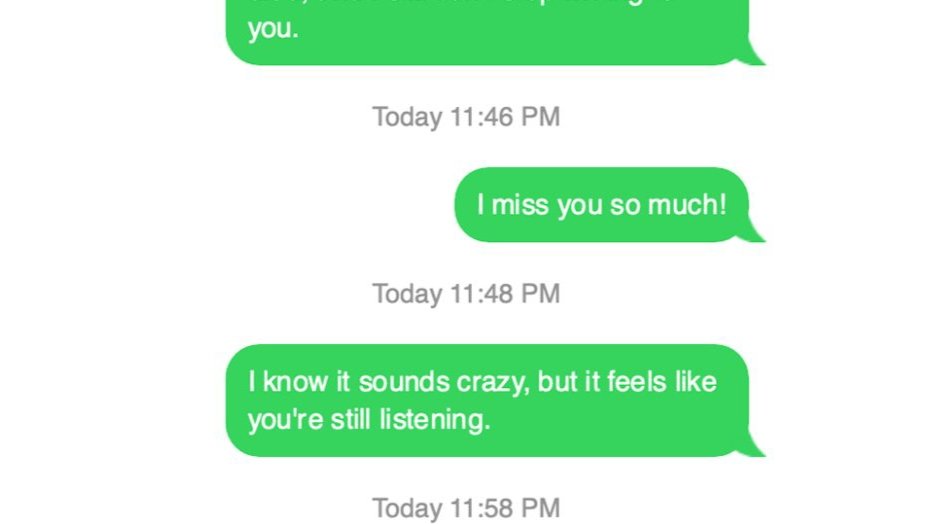
For a year, Lauren sends messages to her late father’s phone, sharing her thoughts and feelings. Then one day, she gets a reply. At first, it’s shocking, but it soon turns into something unexpected—a bond between two strangers. Maybe some messages do find their way home.
Grief is strange.
It doesn’t just disappear. It stays in the quiet moments, in the empty spaces of a home that once felt alive. And it lingers in the habit of wanting to call someone who’s no longer there.
For me, grief lived in my phone.

Grief lived in that little phone—the same device that once made me happy but now only brought pain.
When my mom passed away, I was eleven. After that, my dad became my whole world. He showed love in small, quiet ways—like making Mickey Mouse-shaped pancakes, buying me slushies from the gas station after a long day, and taking me on peaceful Sunday morning fishing trips.
But he also showed love in big, loud ways. On the anniversary of my mom’s death, he threw a pool party for all my friends.
“Dad, you don’t have to do this,” I said, watching him shape burger patties by hand.
“I do, Lo,” he replied, using my nickname. He always said ‘Lauren’ sounded too grown-up for me and that I’d grow into it one day.
“I need this as much as you do, love,” he said, sprinkling black pepper over the meat. “We always get too sad on this day, but your mom wasn’t a sad person. She made everything brighter, didn’t she?”
She did. Of course, she did. She was like the sun.
“So,” my dad said, “we have to live like the sun is shining just for us.”
After that, we did our best to keep living, not letting grief weigh us down too much. But we still made space for it—especially on our fishing trips.
“Out here, kiddo,” he’d say, reeling in his line, “it’s just us and the fish. No worries, no outside world. Just you, me, and the water.”
Even now, I can still hear his voice—clear and warm—just like the sunrise over the dock.
And then, a little over a year ago, a stroke took him from me.

It happened so fast. So unfair.
One day, I went to the dock where we used to fish and sat on the grass. I couldn’t believe this was my life now. I was an orphan. More than anything, I just wanted my parents back.
I sat there for a while, eating a slice of apple pie—something we always did on our fishing trips.
And in that quiet moment, I started texting my dad’s number.
It felt just like the times I used to call him on my way home from school. Like when I needed advice or just wanted to hear one of his terrible dad jokes.
You wouldn’t believe how bad my roommate’s cooking is. She set spaghetti on fire last night. How is that even possible?!
I got my first B in college, Dad. I know, I know—you’d say, ‘B for better next time,’ right? I really miss your corny jokes.
Some guy tried to mansplain fishing to me today. So I showed him our picture with that huge bass from 2016. You should’ve seen his face. Priceless.
It was ridiculous. I felt ridiculous. I was texting a number that wasn’t even his anymore. But somehow, it made me feel like he was still there. Like if I just kept talking into the silence, maybe some part of him could hear me.
On the anniversary of his death, I sat in the clinic’s waiting room and sent three messages, never expecting a reply.
Dad, I miss you so much.
It’s been a year since you left, and I still can’t stop texting you.
I know it sounds crazy, but it feels like you’re still listening.
My chest ached, and I wanted to cry for hours. Where was the happiness? When would the world feel bright again? When would this pain stop?
I sat there, waiting. The silence felt heavy, crushing.
Then my phone beeped. I nearly jumped out of my chair.
You’re not crazy.
I froze. My stomach twisted in a way that wasn’t quite fear, wasn’t quite hope—just something overwhelming and impossible. My heart pounded so hard I could hear it.
I felt sick.
Dad???
Just then, the nurse called my name.
“Lauren! Come on, sweetie, it’s your turn.”
I jumped up, nearly dropping my phone, my heart pounding in my chest. The clinic smelled like antiseptic and overly clean hallways as I followed the nurse inside. Everything felt distant, like I was moving through a dream.
The doctor walked in, smiling.
“Lauren,” he greeted me warmly.
He was middle-aged, with kind eyes and a gentle smile. I nodded, barely hearing him as he went through my routine check-up. My head was spinning, my body felt light, and I wasn’t sure if I had imagined the whole thing.
How could my dad have replied to a text? Was Heaven sending messages now? Had I just witnessed some kind of miracle?
Had Dad somehow, impossibly, reached back to me?
No. That was crazy. I had to be losing my mind. The grief must have finally taken over.

The doctor excused himself to grab some equipment.
“Sorry, Lauren,” he said. “Not sure why the nurse didn’t bring the machines in. Give me a second—I need to check your blood pressure.”
Left alone, I stared at my phone, my fingers hovering over the screen.
I had to know. I just had to.
Dad, are you alive??
A soft ding echoed in the room.
I looked up. The doctor’s phone on his desk lit up.
That couldn’t be a coincidence… right?
“Just take a quick look, Lauren,” I muttered to myself.
I leaned in—and there it was. My message. On his screen.
The world spun. My stomach twisted.
I sent a bunch of random emojis to my dad’s number.
Seconds later, they popped up on the doctor’s phone.
I bolted.
Racing down the hallway, my breath came in sharp, uneven gasps. The walls blurred around me as panic clawed at my throat.
Who was he? Was he even a doctor? A stalker? Someone playing a cruel joke?
Had this man been watching me all along?
Outside, I braced my hands on my knees, leaning against the wall for support. I tried to catch my breath, but the nausea wouldn’t go away.
Hours later, back in my apartment, I clung to my bed, still shaken. My phone buzzed.
I almost ignored it—until I saw the message.
I’m so sorry I didn’t reply earlier. I was at work. Listen, I need to tell you—I’m not your father. I got this number recently, and I guess it used to belong to him. I’m really sorry for your loss.
I read your messages. All of them. At first, I didn’t know what to do. But then… I started looking forward to them. You reminded me that I wasn’t alone either. I lost my daughter four years ago.
Natalie. She used to text her mom and me about everything when she was in college too.

I didn’t mean to scare or hurt you. I just wanted you to know—you’re not crazy. And you’re not alone. Your father had a kind and loving daughter with a beautiful soul. But I can see your pain.
If you ever need anything, anytime, reach out to me.
My vision blurred. The tight knot in my chest—one I hadn’t even realized was there—started to loosen.
This man hadn’t been messing with me. It was just a coincidence. A strange, unbelievable coincidence.
I decided to reply.
You scared me. Oh my goodness.
I know! I’m sorry! he texted back. I had a patient, and I couldn’t use my phone.
Yeah, I know, I typed. Her name was Lauren, and you were about to check her blood pressure.
Silence. No typing bubbles.
How do you know that? Now I’m feeling uncomfortable!
I actually laughed to myself.
Because it was me. I ran out when I saw my messages pop up on your phone. It scared me, and I panicked.
Another pause. Then—my phone rang.
His voice was steady, but there was something raw and unfiltered in it.
“I never meant for you to find out this way,” he said. “But I think fate had other plans. Honestly, I wasn’t sure if I wanted you to know at all.”
And just like that, we were talking. About my dad, his daughter, and grief. We talked about loss and the strange ways the universe brought people together.
By the end of the call, I felt lighter, like some of the weight had been shared with someone who truly understood loss.
“Um, Lauren,” he said. “You should probably come back so we can finish your check-up.”
I laughed.
“I will,” I replied. “Thank you, Henry, for letting me talk about my father. On the phone, and through all those texts.”
“Anytime, kiddo,” he chuckled softly. “But I have to know—how did your roommate set fire to spaghetti? That’s one of the best texts I’ve ever gotten.”
We made plans to meet at a diner the following week.
“Lauren, we’re supposed to be doing your check-up, not eating greasy food,” he teased.
“Henry, I need a pick-me-up,” I laughed. “You can schedule me in before my final exams. In about a week.”
“Fine,” he agreed. “Now, order whatever you want. My treat.”
We sat there for hours, sipping milkshakes, eating fries, and finishing off with a slice of apple pie.
Suddenly, things seemed brighter. I didn’t feel as alone. My heart still ached for my parents, but Henry was starting to fill some of that emptiness. He told me about his daughter and how much she loved burgers.
“Seriously, Lo,” he laughed. “Nat would probably have sold her soul for a good burger.”
By the end of the night, he promised to introduce me to his wife.
“Margot will adore you,” he said simply.
And just like that, a little bit of joy found its way back into my life.
Best Of
A helpful bystander shoots a robber with a weapon, and the robber’s family’s reaction angers people.
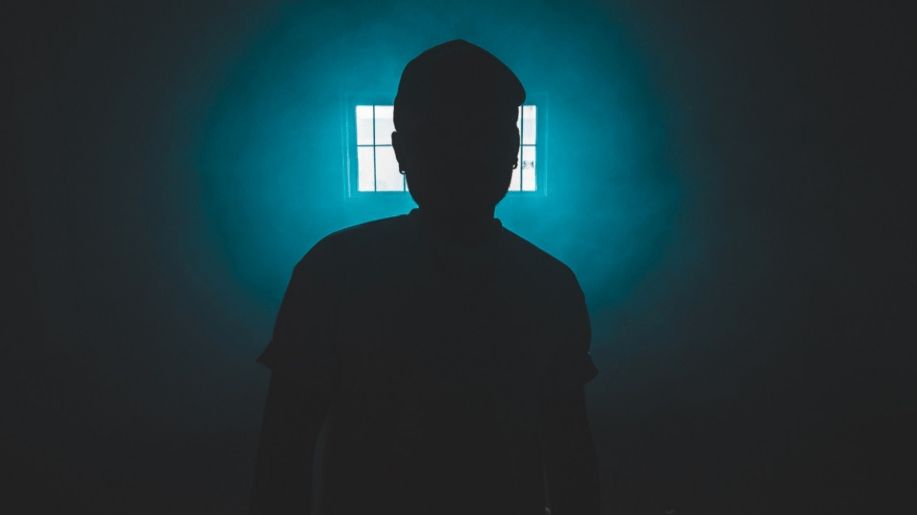
Adric White, 18, took out a gun, went into a Family Dollar store, and told the cashier to hand over all the money.
He held the employees at gunpoint, thinking he was in control. Confident and in charge, he gave orders and expected them to be followed.
But things changed when a bystander with a legal gun stepped in and confronted him.
The Good Samaritan pointed his gun at White and told him not to move.
But White refused to back down and instead looked at the man instead of following orders.
The Good Samaritan shot White five times, stopping him. This allowed others to tie him up and take away his gun.

Even though Adric White survived being shot five times, his pride was hurt the most. After getting medical care, he was charged with armed robbery.
His family was furious when they found out. They couldn’t understand how the man with the legal gun had shot White and wasn’t arrested.
They demanded to know why the police didn’t take him into custody.
White’s family said the man shouldn’t have shot him. They believed he should have just walked away and not gotten involved.
But the Good Samaritan felt threatened by White, so he stepped in and fired five shots. Even though it was risky for him to act, he wanted to stop the crime.

Since White was aiming his gun at the store employees and threatening to kill them, the bystander had the right to protect himself and others.
White and his family have no real proof to support their argument. They were just upset that White’s plan failed and that he got shot instead of getting away with the crime.
The exact places where White was shot haven’t been revealed. However, he is in stable condition and is expected to recover fully.
He should be grateful he survived. Bringing a gun to rob a store is always dangerous.
Even though he didn’t escape unharmed, he still made it out alive, and that’s something to appreciate.
The Good Samaritan has asked to stay anonymous, so we haven’t shared his name. However, he did say that this was the first time he ever had to use his concealed carry, and he wishes it didn’t have to come to gunfire.
Feel free to share this with your friends and family to spark an interesting discussion!

Why the bathtub is safest spot in hotel room to store luggage

I sent texts to my dad’s old phone every day for a year—until one day, I got a reply that shocked me.

A helpful bystander shoots a robber with a weapon, and the robber’s family’s reaction angers people.
Trending
-

 Entertainment1 year ago
Entertainment1 year agoJohn Wayne’s son speaks on military service, Hollywood life and his dad, ‘The Duke’ – My Blog
-

 Entertainment1 year ago
Entertainment1 year ago40 Legendary John Wayne Quotes – My Blog
-
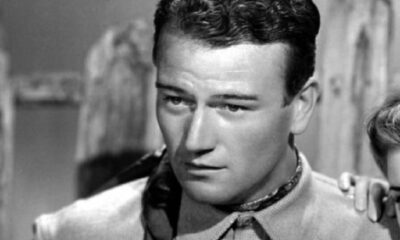
 Entertainment1 year ago
Entertainment1 year agoNew biography reveals the real John Wayne – My Blog
-
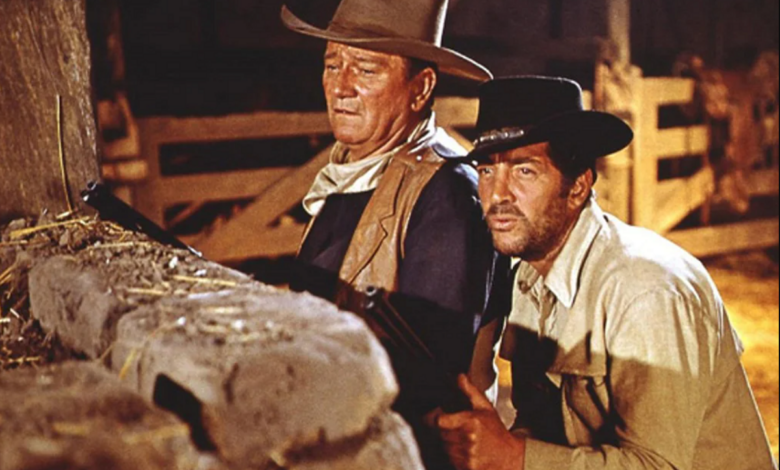
 Entertainment2 years ago
Entertainment2 years agoWhy one POPULAR ACTOR was FIRED from THE SONS OF KATIE ELDER and lost his career as a result! – Old western – My Blog
-
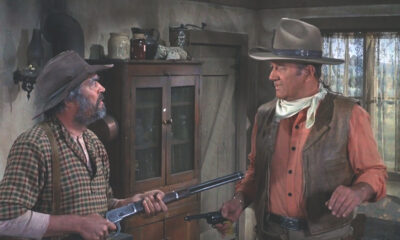
 Entertainment1 year ago
Entertainment1 year agoRio Lobo (1970) marked the last collaboration between John Wayne and Howard Hawks. – My Blog
-
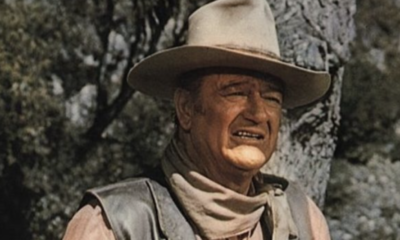
 Entertainment1 year ago
Entertainment1 year agoJohn Wayne and the ‘Bonanza’ Cast Appeared in This Epic Coors Light Commercial – My Blog
-

 Entertainment1 year ago
Entertainment1 year agoHow Maureen O’Hara Broke Her Hand During Iconic Scene With John Wayne – My Blog
-
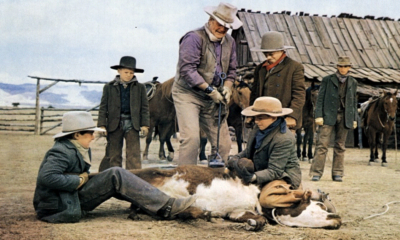
 Entertainment1 year ago
Entertainment1 year agoDid John Wayne really have a good time filming 1972’s The Cowboys? – My Blog
